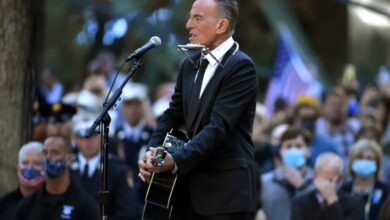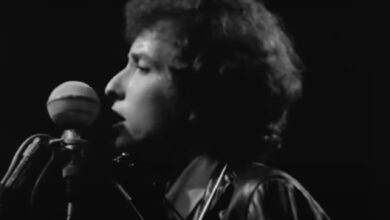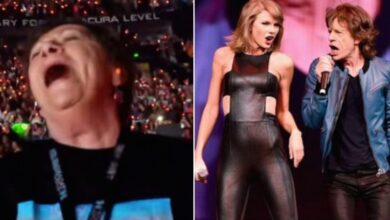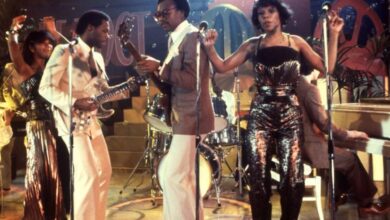Brian Hyland’s ‘Itsy Bitsy Teenie Weenie Yellow Polka Dot Bikini’ Brings Playful Pop to the Charts in 1960
In the summer of 1960, Itsy Bitsy Teenie Weenie Yellow Polka Dot Bikini became an unexpected sensation, launching the career of teenage singer Brian Hyland and capturing the carefree spirit of a new era. With its playful lyrics and catchy melody, the song struck a chord with young audiences, soaring to No. 1 on the Billboard Hot 100. While it may have seemed like a novelty hit, its influence stretched far beyond its initial release, helping to shape the bubblegum pop movement and leaving an indelible mark on pop culture.
Brian Hyland was just 16 years old when Itsy Bitsy Teenie Weenie Yellow Polka Dot Bikini catapulted him to stardom. Born in 1943 in Queens, New York, Hyland had a passion for music from a young age, performing in doo-wop groups before landing a solo contract. His youthful charm and smooth voice made him a natural fit for the teen idol wave that was sweeping the late ‘50s and early ‘60s. Though he would later transition into more mature ballads, his first major hit established him as a key figure in the early pop music scene.
The song was penned by Paul Vance and Lee Pockriss, a songwriting duo known for their knack for crafting lighthearted, radio-friendly tunes. According to Vance, the inspiration came from his young daughter, who was too shy to wear her new polka dot swimsuit at the beach. This amusing yet relatable scenario became the foundation for a song that humorously detailed a young girl’s hesitation to emerge from a changing booth in her revealing bikini. While playful on the surface, the lyrics cleverly tapped into the era’s evolving attitudes toward fashion and modesty, making the song more relevant than its novelty status suggested.
Recording sessions for Itsy Bitsy Teenie Weenie Yellow Polka Dot Bikini took place at Bell Sound Studios in New York City, with Pockriss handling the production. The arrangement featured a bouncy, upbeat melody driven by a prominent brass section and lively percussion. Hyland’s youthful vocals carried the lighthearted lyrics with just the right mix of innocence and enthusiasm. Background singers added to the song’s whimsical nature, emphasizing key phrases with spoken-word interjections like “two, three, four / tell the people what she wore.” The result was a song that was not only fun but also irresistibly catchy.
Upon its release, the song became an instant hit. It debuted on the Billboard Hot 100 in July 1960 and, within a few weeks, climbed to the No. 1 spot. Audiences were drawn to its playful energy, and radio stations couldn’t get enough of it. Beyond the United States, the song found international success, charting in countries like the United Kingdom, where it reached No. 8. It also became a summer anthem, frequently played at pool parties and beach gatherings, further cementing its place in pop culture.
Culturally, Itsy Bitsy Teenie Weenie Yellow Polka Dot Bikini arrived at a time when swimwear was a topic of controversy. The bikini, though introduced in the late 1940s, was still considered risqué by many in the conservative 1950s. The song’s humorous approach to a young woman’s hesitancy to wear one reflected the shifting cultural landscape. By the early 1960s, bikinis were becoming more accepted, and the song played a small but notable role in normalizing them in mainstream fashion.
For Brian Hyland, the success of Itsy Bitsy Teenie Weenie Yellow Polka Dot Bikini was both a blessing and a challenge. While it gave him a career-defining hit, it also branded him as a novelty act—a label that proved difficult to shake. Determined to showcase his versatility, Hyland later transitioned to more mature ballads, finding success with songs like Sealed with a Kiss (1962) and Gypsy Woman (1970). Nevertheless, his first big hit remained the song most closely associated with him.
The song’s impact extended beyond Hyland’s career, influencing the development of bubblegum pop, a genre that would dominate the late 1960s with its fun, carefree melodies and simple, sing-along lyrics. Artists like The Archies and The Monkees carried forward the lighthearted spirit that Itsy Bitsy Teenie Weenie Yellow Polka Dot Bikini embodied. The song also became a go-to track for summertime compilations, ensuring that each new generation would be introduced to its infectious charm.
Over the years, Itsy Bitsy Teenie Weenie Yellow Polka Dot Bikini has been covered and reinterpreted by various artists. In 1990, pop singer Bombalurina revived the song, taking it to No. 1 on the UK charts. Other versions, ranging from dance remixes to foreign-language adaptations, have continued to keep the song alive in different musical landscapes. Its simple yet effective storytelling ensures that it remains one of the most recognizable novelty songs of all time.
At the time of the song’s release, the world was on the brink of a new decade marked by cultural and musical revolutions. While Itsy Bitsy Teenie Weenie Yellow Polka Dot Bikini may not have been a deeply profound composition, it served as a snapshot of the era’s changing attitudes toward youth culture, fashion, and pop music. It was a lighthearted moment in an evolving industry, proving that sometimes, a simple, catchy tune could leave a lasting impact.
Decades later, the song continues to be a favorite in nostalgic retrospectives. It frequently appears in films, commercials, and television shows whenever a scene calls for a retro beach party vibe. Its enduring popularity is a testament to the power of fun, well-crafted pop music.
More than just a novelty hit, Itsy Bitsy Teenie Weenie Yellow Polka Dot Bikini remains a symbol of the innocent yet evolving pop culture of the early 1960s. While Brian Hyland would go on to explore other musical styles, his first major success remains one of the most iconic songs of its time.
Ultimately, Itsy Bitsy Teenie Weenie Yellow Polka Dot Bikini is a reminder that music doesn’t always have to be serious to be impactful. Sometimes, a playful melody and a clever lyric are enough to create a song that resonates across generations. It may have started as a lighthearted summer hit, but its place in music history is anything but small.



